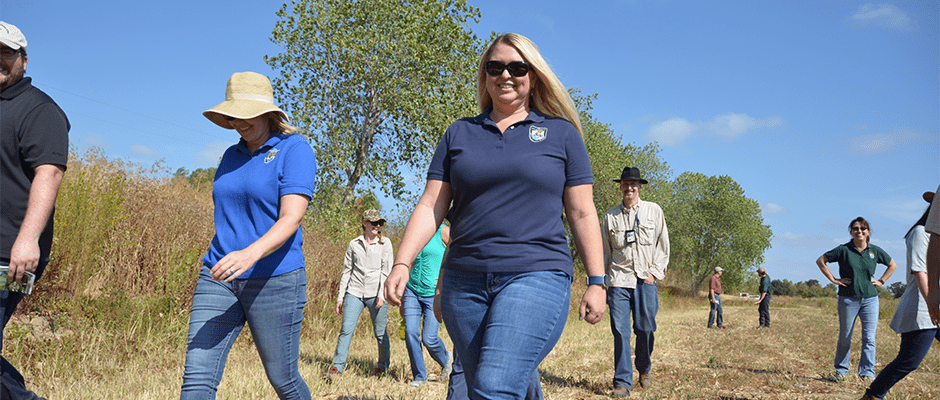Share this article
TWS salutes women in wildlife biology careers: Kim Turner
The National Women’s History Project, founded in 1980, is a nonprofit educational organization committed to recognizing and celebrating women’s diverse and significant historical accomplishments. Each March, the group highlights the accomplishments of women in all professions. This year’s theme is “Nevertheless She Persisted: Honoring Women Who Fight All Forms of Discrimination Against Women.”
In cooperation with the U.S. Fish and Wildlife Service, TWS is pleased to highlight the contributions of women in wildlife conservation and management in the agency’s Women in Science series.
When you grow up with a love of the outdoors and nature, a career as a fish and wildlife biologist can be the perfect path. That is the case for Sacramento Fish and Wildlife Office’s Deputy Assistant Field Supervisor Kim Turner. For her, the transition from nature lover to career professional was seamless. Kim has a strong commitment to partnerships and understands that the agency’s conservation mission can only be achieved through successful collaborations that take the needs of species and people into account.
Why did you become a biologist?
I’ve loved animals and the outdoors from as far back as I can remember. In almost every picture of me as a child, you will either find me with an animal or in the outdoors. I spent a lot of time camping in the Pacific Northwest and in the Sierra Nevada foothills, boating and fishing on the Sacramento-San Joaquin Delta, and exploring the California coast. I remember being so in awe of the beauty of nature. Those experiences created a strong connection to the outdoors, and fish and wildlife in particular. Over time, that grew into a desire to want to protect those resources. As I learned more about career options in the sciences, my career goals evolved, ultimately deciding to become a fish and wildlife biologist with the U.S. Fish and Wildlife Service.
What aspect of wildlife biology are you most passionate about?
I am most passionate about conservation of fish and wildlife and preservation of their habitat but, I‘m equally passionate about developing and maintaining positive partnerships with others. I believe strongly in creating positive experiences with the public and our partners that grow support in continuing our conservation mission.
What do you find most challenging about your work?
I find the most challenging aspect of my job is time. I always want to give everything I do and everyone I interact with the time and focus it/they deserve but sometimes that isn’t possible. Finding balance and prioritizing is incredibly important. I’m a strong believer that people come first.
What 3 tips would you give someone in becoming a wildlife biologist?
- Find jobs you are passionate about and learn everything you can while in them. You’ll be a better biologist when you’re doing what you love.
- Take on new opportunities to learn skills outside of your current job. You’ll not only be surprised at how much you learn in that new role, but also how you can bring that knowledge back to your current job and improve upon yourself with a broader perspective.
- Don’t forget the importance of creating and maintaining positive partnerships with others. It’s amazing what you can get accomplished through collaboration. And it’s equally important to understand the views and interests of others as it is to clearly articulate your own. Whether it’s in your personal life or your professional life, being able to effectively communicate is key.
What are you most hopeful about as it relates to conservation?
I am most hopeful that my children’s generation will continue and grow the legacy of conservation and protection of fish and wildlife and their habitats into the future.
The U.S. Fish & Wildlife Service is a Strategic Partner of The Wildlife Society.
Header Image: Sacramento Fish and Wildlife Office Biologist Kim Turner on a site visit to observe Valley Elderberry Beetle habitat. ©Veronica Davison/USFWS








